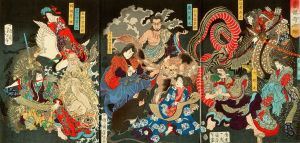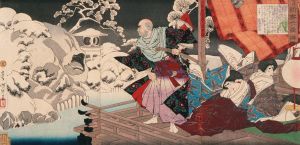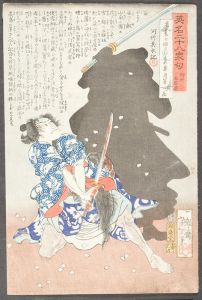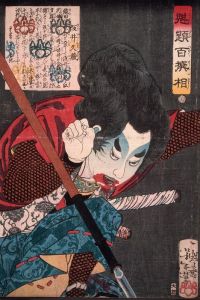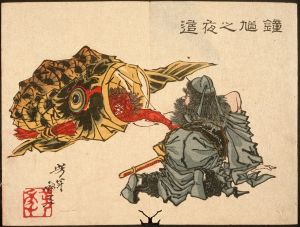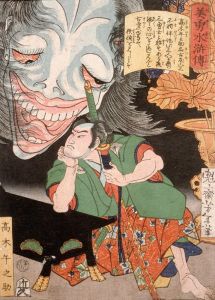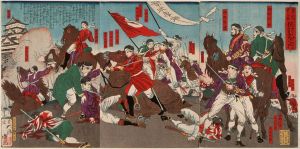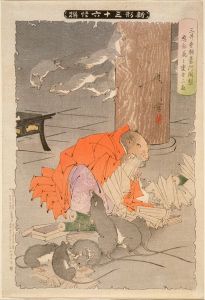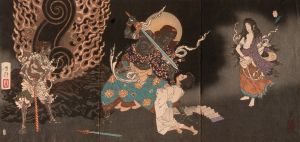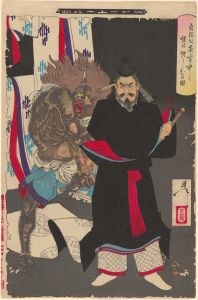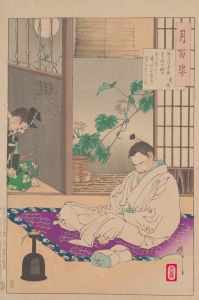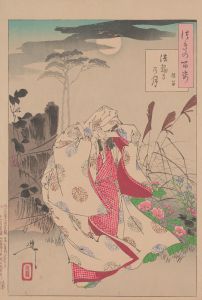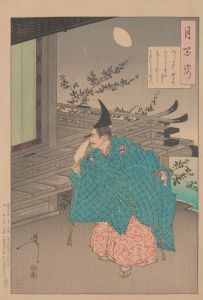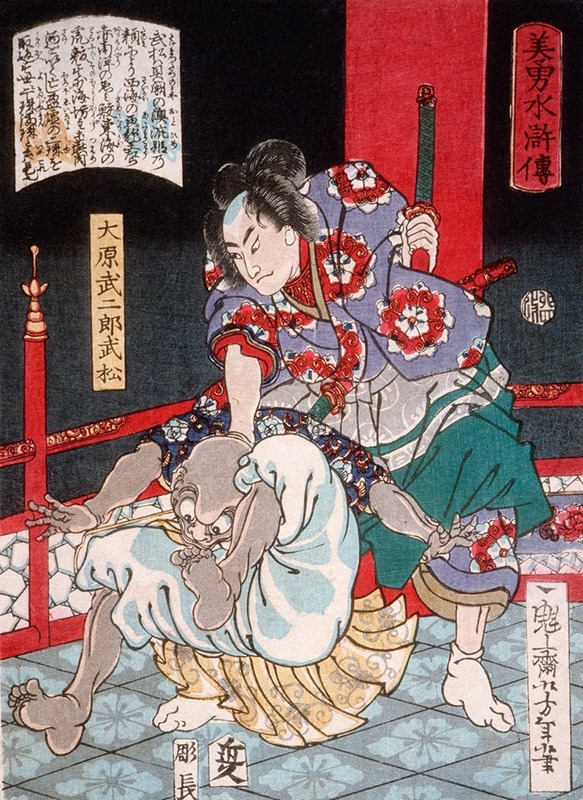
Ōhara Takejirō Takematsu Subduing a Bald Demon
A hand-painted replica of Tsukioka Yoshitoshi’s masterpiece Ōhara Takejirō Takematsu Subduing a Bald Demon, meticulously crafted by professional artists to capture the true essence of the original. Each piece is created with museum-quality canvas and rare mineral pigments, carefully painted by experienced artists with delicate brushstrokes and rich, layered colors to perfectly recreate the texture of the original artwork. Unlike machine-printed reproductions, this hand-painted version brings the painting to life, infused with the artist’s emotions and skill in every stroke. Whether for personal collection or home decoration, it instantly elevates the artistic atmosphere of any space.
Ōhara Takejirō Takematsu Subduing a Bald Demon is a woodblock print created by the renowned Japanese artist Tsukioka Yoshitoshi. Yoshitoshi, born in 1839 and active during the late Edo and early Meiji periods, is celebrated for his innovative approach to ukiyo-e, a genre of Japanese woodblock prints. His works often depicted historical scenes, kabuki actors, beautiful women, and supernatural themes, reflecting the cultural and social changes of his time.
This particular print is part of Yoshitoshi's series "New Forms of Thirty-Six Ghosts" (Shinkei Sanjūrokkaisen), which was published between 1889 and 1892. The series is known for its imaginative and sometimes eerie depictions of ghosts, demons, and other supernatural entities from Japanese folklore and history. Yoshitoshi's fascination with the supernatural is evident in this series, where he combines traditional Japanese themes with his unique artistic style.
Ōhara Takejirō Takematsu Subduing a Bald Demon illustrates a dramatic scene where the protagonist, Ōhara Takejirō Takematsu, confronts and overpowers a demon. The demon is depicted as bald, which is a distinctive feature that sets it apart from other supernatural beings in Japanese folklore. The confrontation between Takematsu and the demon is rendered with dynamic composition and vivid detail, characteristic of Yoshitoshi's work.
Yoshitoshi's use of color and line work in this print exemplifies his mastery of the woodblock printing technique. The bold lines and contrasting colors create a sense of movement and tension, drawing the viewer into the scene. The expressions and postures of the characters convey a narrative of bravery and triumph over malevolent forces, a common theme in Yoshitoshi's ghost series.
The print reflects the cultural context of the Meiji era, a time when Japan was undergoing rapid modernization and Westernization. Despite these changes, there was a continued interest in traditional Japanese stories and art forms. Yoshitoshi's work, including this print, represents a bridge between the old and the new, preserving traditional themes while incorporating contemporary artistic influences.
Ōhara Takejirō Takematsu Subduing a Bald Demon is not only a testament to Yoshitoshi's artistic skill but also an example of how Japanese art can encapsulate the complexities of its cultural heritage. The print remains a valuable piece for those interested in the intersection of art, folklore, and history, offering insight into the enduring appeal of supernatural themes in Japanese culture.
Today, Yoshitoshi's works, including this print, are highly regarded by collectors and scholars. They are studied for their artistic merit and their ability to convey the rich tapestry of Japanese folklore and history. The print serves as a reminder of the enduring power of storytelling through visual art, capturing the imagination of audiences both in Japan and around the world.






